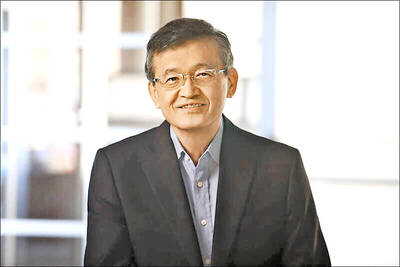US employers cut 539,000 jobs last month, the fewest since October, according to government data on Friday that signaled the economy’s steep decline might be easing and gave the stock market a boost.
The unemployment rate, however, soared to 8.9 percent, the highest since September 1983, from 8.5 percent in March, and job losses in March and February were a combined 66,000 steeper than estimated, the Labor Department said.
A 72,000 jump in government payrolls tempered the overall job-loss figure. Government employment was bolstered by the hiring of about 60,000 temporary workers in preparation for the census next year and US Labor Secretary Hilda Solis said this figure would fluctuate in the months ahead.
.jpg)
Private sector employment fell by 611,000 last month after a 693,000 decline in March, the department said, which curbed some of the optimism over the report.
Still, the data was not as bleak as financial markets had expected and offered the freshest sign that the intensity of the recession, now in its 17th month, was starting to fade.
“The labor report added to the growing list of data points that imply that the steepest part of the economic contraction is now past,” said Brian Fabbri, chief North America economist at BNP Paribas in New York.
US President Barack Obama, whose government has rolled out a record US$787 billion rescue package of spending and tax cuts, said last month’s payrolls number was somewhat encouraging, but that the job losses were still a sobering toll.
“It underscores the point [that] we’re still in the midst of a recession that was years in the making and that is going to be months or even years in the unmaking. We should expect further job losses in the months to come,” Obama said.
Since the start of the recession in December 2007, the US economy has lost 5.7 million jobs, the Labor Department said.
Meanwhile, Canada unexpectedly gained 35,900 jobs last month as the unemployment rate remained at a seven-year high of 8 percent, Statistics Canada said on Friday.
However, all of the job gains were in the self-employed category, which is normally a sign of labor market weakness.
Economists had forecast employment would be down about by 50,000 last month.
“Look, we’re not going to say that this is the end of job losses; there’s still a risk of increased job loss going forward,” Canadian Prime Minister Stephen Harper told a news conference on Friday.
“In terms of recessions, employment is the last thing to be hit and it’s also the slowest to recover. We don’t want to declare victory yet, but the very fact we’re seeing some positive numbers in the labor market is a very good sign,” he said.
Economist Douglas Porter of BMO Capital Markets said last month’s improvement may be little more than a re-balancing from the deep losses of the previous five months, when employment dropped by 357,000.
“This report is clearly good news, but it’s premature to send the all-clear signal,” Porter said.
Canada suffered its worst quarter of job losses in its history in the first three months of the year. Canada lost 61,300 jobs in March, 83,000 in February and a record 129,000 in January.
Since October, the economy has shed 321,000 net jobs and 356,000 employees. The difference has been the 1.3 percent growth in the self-employment category.

Intel Corp chief executive officer Lip-Bu Tan (陳立武) is expected to meet with Taiwanese suppliers next month in conjunction with the opening of the Computex Taipei trade show, supply chain sources said on Monday. The visit, the first for Tan to Taiwan since assuming his new post last month, would be aimed at enhancing Intel’s ties with suppliers in Taiwan as he attempts to help turn around the struggling US chipmaker, the sources said. Tan is to hold a banquet to celebrate Intel’s 40-year presence in Taiwan before Computex opens on May 20 and invite dozens of Taiwanese suppliers to exchange views

Application-specific integrated circuit designer Faraday Technology Corp (智原) yesterday said that although revenue this quarter would decline 30 percent from last quarter, it retained its full-year forecast of revenue growth of 100 percent. The company attributed the quarterly drop to a slowdown in customers’ production of chips using Faraday’s advanced packaging technology. The company is still confident about its revenue growth this year, given its strong “design-win” — or the projects it won to help customers design their chips, Faraday president Steve Wang (王國雍) told an online earnings conference. “The design-win this year is better than we expected. We believe we will win

Chizuko Kimura has become the first female sushi chef in the world to win a Michelin star, fulfilling a promise she made to her dying husband to continue his legacy. The 54-year-old Japanese chef regained the Michelin star her late husband, Shunei Kimura, won three years ago for their Sushi Shunei restaurant in Paris. For Shunei Kimura, the star was a dream come true. However, the joy was short-lived. He died from cancer just three months later in June 2022. He was 65. The following year, the restaurant in the heart of Montmartre lost its star rating. Chizuko Kimura insisted that the new star is still down

While China’s leaders use their economic and political might to fight US President Donald Trump’s trade war “to the end,” its army of social media soldiers are embarking on a more humorous campaign online. Trump’s tariff blitz has seen Washington and Beijing impose eye-watering duties on imports from the other, fanning a standoff between the economic superpowers that has sparked global recession fears and sent markets into a tailspin. Trump says his policy is a response to years of being “ripped off” by other countries and aims to bring manufacturing to the US, forcing companies to employ US workers. However, China’s online warriors